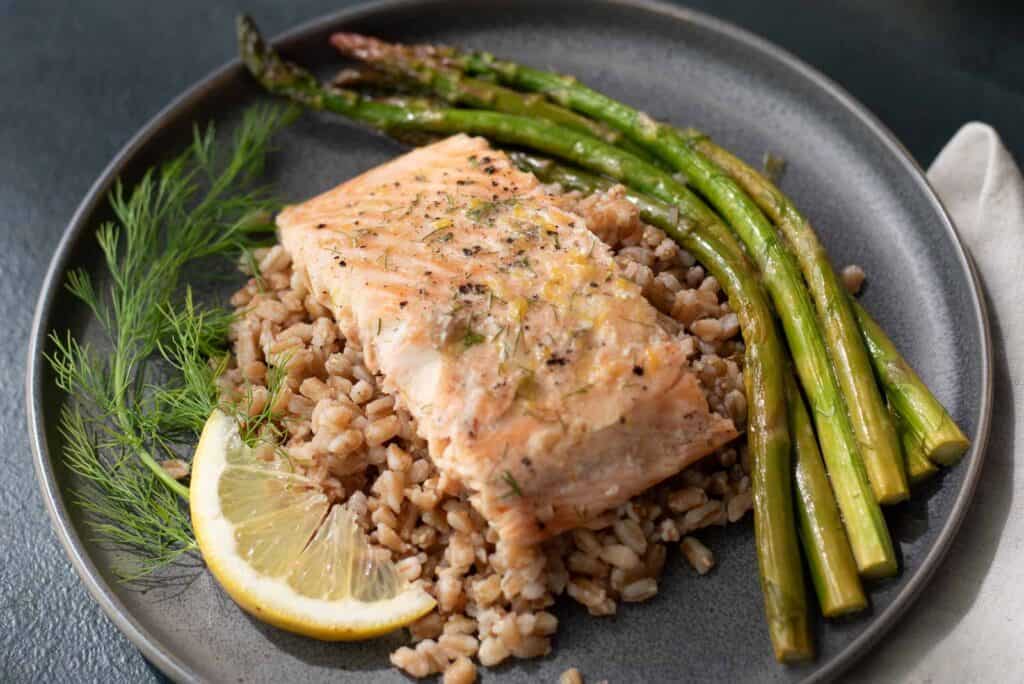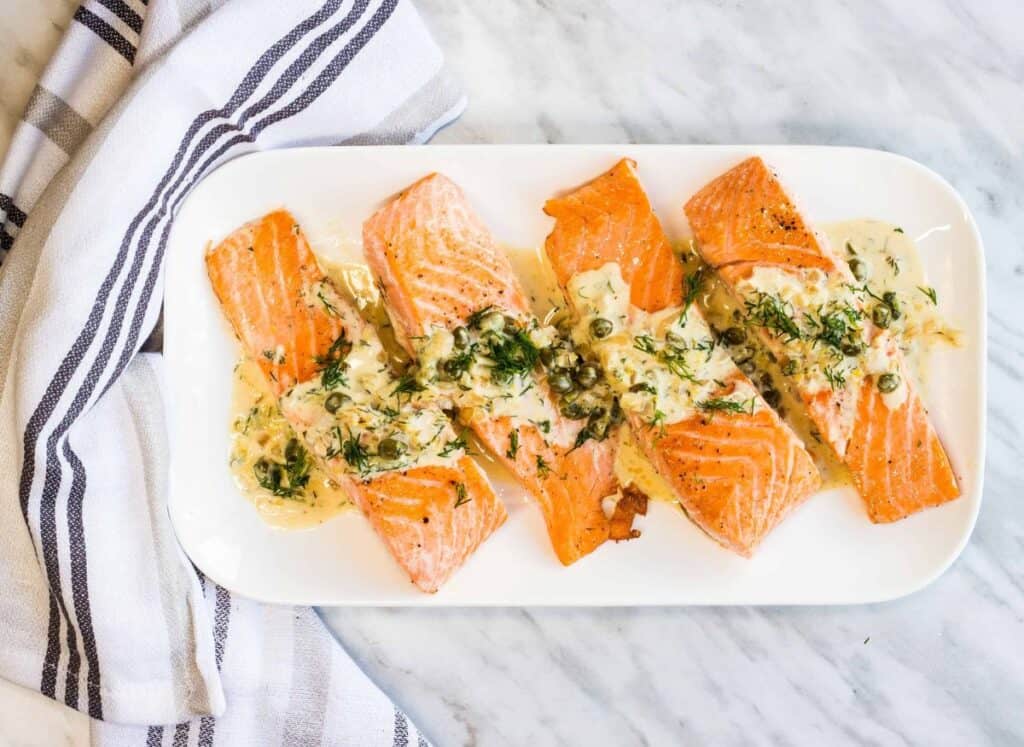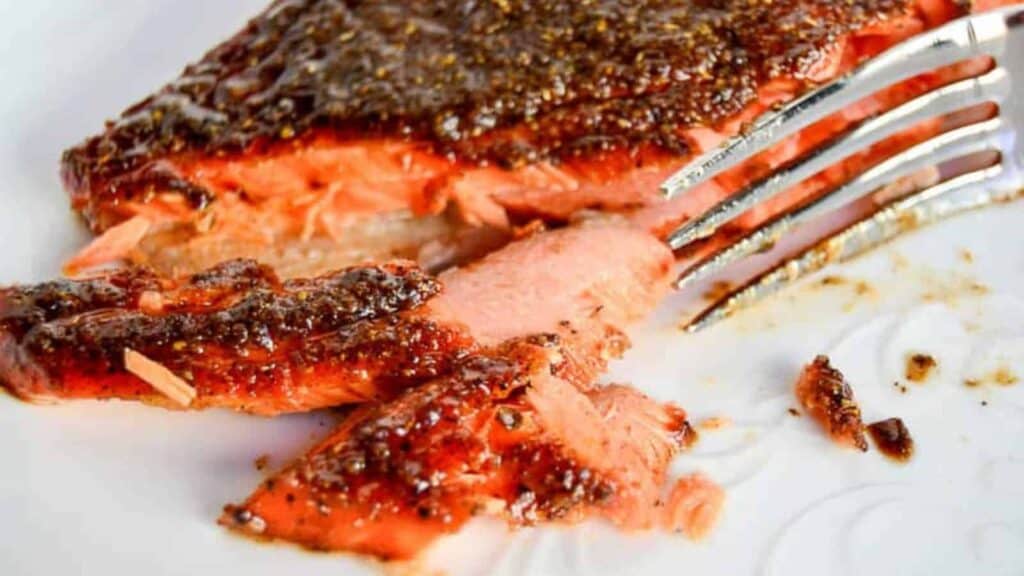A favorite among fish lovers, you can successfully prepare salmon in various ways that showcase its rich yet delicate flavor. While overcooking can lead to dry, unpalatable fish, not everyone loves the idea of raw or undercooked salmon. The key to achieving the perfect dish while learning how to cook salmon is using the right tools, mastering the technique and knowing your diners’ preferences.

Selecting quality salmon
Between farmed and wild or frozen and fresh, many types of salmon are widely available today. Figuring out which options are best for you is the best place to start.
Most salmon available in the U.S. market falls into two categories: Atlantic salmon and Pacific salmon. Most Atlantic salmon are farm-raised and known for their high-fat content and more affordable pricing. Pacific salmon encompasses a variety of species like king, coho and sockeye. A more expensive option, it is typically wild-caught, has a deeper pink-to-red color and often a bolder, richer flavor.
When choosing between fresh and frozen salmon, you’ll need to weigh out your options and needs carefully. Fresh salmon should have firm flesh and moist skin and never smell fishy. You should use it fairly quickly, so check for a harvest date and use or freeze it within a day or two. Frozen fish are often flash-frozen at sea to lock in freshness. As long as it is free of signs of discoloration or freezer burn and the packaging is fully intact, the quality of frozen salmon may exceed that of fresh.
Be sure to read the labels in the display case, as the fresh salmon many of us see at the grocery store is actually previously frozen. While this is convenient for same-day use, it may cost you more and once thawed, it should not be re-frozen.
Preparing the salmon
To prepare your salmon for cooking, consider removing the skin and bones before seasoning the flesh. Removing the skin is optional and depends on the type of preparation you choose and whether or not you like to eat it. You can choose to buy salmon with or without the skin to save a step.
Salmon sold in filets has often already been deboned for you, but as it is easy to miss a few pin bones, it’s best to double-check before cooking. Gently run your fingers along the flesh of the raw salmon to feel for the prickly bits of bone that stick out of the flesh, and then use a pair of tweezers to pull the bones out gently.
Salmon cooking temperature
The desired degree of doneness for properly prepared salmon is between 125 F and 145 F and depends entirely upon the personal preference of those eating it. Like tuna, you can enjoy high-quality salmon raw — when cooked to rare with an internal temperature of 125 F, it becomes deliciously moist and tender. Salmon is also delicious when cooked to the USDA’s recommended safe temperature of 145 F. However, the longer it cooks, the denser and chewier the flesh becomes. Overcooked salmon will take on a rubbery texture and lose most of its flavor.

How to cook salmon
You can prepare salmon in a variety of ways, each highlighting its texture and taste differently. Some of the most common ways to prepare salmon are oven baking, pan-frying, grilling and poaching.
“My favorite way of cooking salmon is either roasting or grilling it. Both use a consistent heat that creates a delightfully crispy crust while ensuring the interior remains moist and silky. Just make sure not to overcook your salmon. This is the worst sin, as it changes the texture and flavor immensely. Dry, overcooked salmon ruins all your hard work and loses the flavor you want.”
–– Michelle Price, Honest and Truly
Oven baking
Baking salmon in a moderate oven, between 350 F and 375 F, allows the fish to cook evenly and retain moisture. Baked lemon dill salmon is an easy recipe highlighting how a simple salmon preparation can turn a one-pan dinner into a restaurant-worthy meal in only 30 minutes.
Pan-frying
Pan-frying in a skillet over medium-high heat with the skin side down is an excellent way to create a deliciously crisp exterior without overcooking the interior flesh. It’s also very quick, taking less than 8 to 10 minutes on average to bring your fish to the ideal temperature.
Grilling
Grilling imparts a smoky flavor that complements salmon’s natural flavor. You can grill salmon directly on a well-oiled grate or a cedar plank, like this grilled garam masala salmon. Using a cedar plank creates indirect heat that mimics the results from a moderate oven while grilling on the grate with direct heat crisps up the skin, similar to pan frying.
Poaching
Poaching involves gently simmering salmon in a flavorful liquid, such as broth, beer or wine, often infused with herbs and spices. The process typically takes 10 to 15 minutes, allowing the salmon to remain tender and absorb the flavors from the poaching liquid.

Serving salmon
Salmon’s versatility is on full display when it comes to serving it. Because it cooks up so quickly, it makes for an easy weeknight meal, but the elegance of its flavor can make some preparations fit for a fancy date night or dinner party at home. It pairs beautifully with simply prepared vegetables and grains or more complex sides like this couscous salad with summer vegetables.
Making salmon at home
Learning to prepare salmon at home is an easy way to elevate both your cooking skills and dining experiences. Knowing how to select high-quality fish, using proper cooking techniques and adjusting flavors and degree of doneness to meet your guests’ preferences allows you to deliver outstanding dishes consistently. Whether you prefer grilling, baking, pan-frying or poaching, each method brings its own unique qualities to the table, ensuring your salmon is always a hit. The key to success lies in careful cooking to maintain moisture and flavor, allowing you to impress with every plate served.
Renee N Gardner is the creative mastermind behind Renee Nicole’s Kitchen, a recipe blog based on seasonal ingredients, dedicated to helping home cooks build their kitchen confidence to become home chefs. When Renee isn’t writing, developing recipes or photographing food, you’ll find her in the garden, traveling or enjoying the outdoors with her husband, son and two dogs.